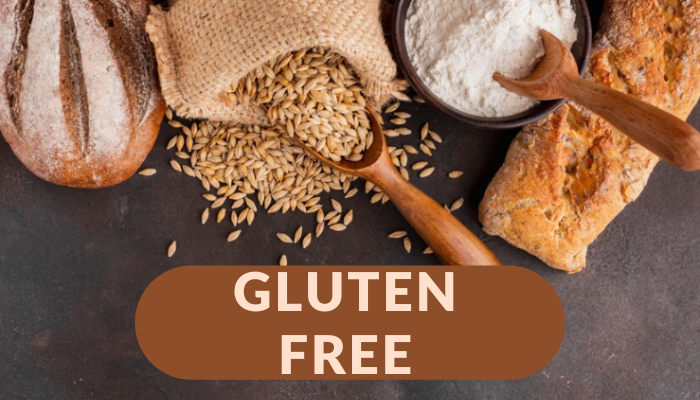There are several reasons why gluten free diet for diabetes should be chosen
Carbohydrate control:
By choosing gluten-free for diabetes , you have to eliminate any foods that contain wheat, barley, and rye flours, which are often high in carbs, which raises the blood sugar level in people with diabetes.
Many gluten-free alternatives, like quinoa, amarnath, and buckwheat, are lower in carbs and high in fibre, which makes them better at managing blood sugar.
Weight management:
Start by using gluten-free foods instead of gluten-containing foods. I’ll help you to lower your calories and lose weight, which can improve insulin sensitivity and diabetes management.
Celiac disease:
People with type 1 diabetes have a higher risk of developing Celia disease; it is an autoimmune condition in which the body is damaged by gluten consumption at this time. Following this diet is necessary for both people with Celia disease and type 1 diabetes.
Inflammation:
According to some research, gluten may be a responsible factor for causing inflammation in certain conditions, which could exhibit insulin resistance and, worse, diabetes control.
What is gluten?
Gluten is a protein found in wheat, barley, rye, and some other grains. It is commonly found in certain daily-use items like pasta, bread, cereal, and baked goods. It is like glue that helps food maintain its shape.
Some people avoid gluten due to their gluten intolerance or celiac disease, a serious autoimmune disorder triggered by gluten consumption.
What are gluten free free-foods?
Foods that do not contain gluten, which is a protein found in wheat, rye, etc. People with coeliac diseases and non-gluten-sensitive foods need to have a strict gluten-free diet.
Process gluten-free food may not include certain daily items; use items like bread, pasta, crackers, bread goes, and other products made from brief flour.
However, it’s important to check the labels carefully, as cross-contamination might occur during the manufacturing of these goods.Many naturally gluten-free foods are suitable for people with dietary restrictions, such as a vegan or pale diet.
Some example of naturally glue free food
- Fruits and vegetable.
- Meat, poetry, fresh, and egg.
- Dairy products like milk, yoghurt, and cheese.
- Beans, legumes, nuts, and seeds.
- Gluten-free grains like rice, corn, buckwheat millet.
- Gluten-free flours made from these grains.
Many foods contain gluten in their carbohydrates, too, which means they can raise blood sugar levels.
Why choose gluten-free for diabetes
In cases of type 1 and type 2 diabetes, blood sugar levels are not directly affected by gluten. But it has been linked to Celia disease. So here is some information on why choosing gluten-free for diabetes is necessary.
Type 1 diabetes people with type 1 diabetes have an increased risk of developing Celia disease. When a person with diabetes consumes food with gluten, it can damage their small intestine. Which can interfere with nutrition absorption, and blood sugar control is also affected. In order to manage a strict, free diet to prevent complications
Type 2 diabetes: people with type 2 diabetes they might not have conditions like Celia disease, but gluten sensitivity is seen in such people. Gluten can cause gastrointestinal symptoms and inflammation in the body.
Conclusion
It is important to remember that many gluten-free foods are unhealthy and inappropriate for people with diabetes, meaning gluten-free processes. Foods are high in sugar and unhealthy and contain refined carbohydrates, which can raise blood sugar levels.
It is seen that in some individuals with diabetes, gluten-free diets have helped them in better management of their blood sugar level, especially if they also have Celiac disease or gluten sensitivity. If someone with diabetes wants to follow a gluten-free diet, remember balance, nutrition, and monitoring. The carbohydrates intake is mandatory.
A diet you can follow for gluten-free diet for diabetes
Here’s a small example of a gluten-free diet that can be followed.
Breakfast
Overnight oats with fruits (Use ½ cup rolled oats with yogurt).
Lunch
1 bowl of rice+ 1 bowl of dal with salad.
Evening snacks
2 tbsp hummus+ carrots and cucumbers.
Dinner
1 bowl of quinoa+ 100gms grilled chicken.
Written by:- Amisha


